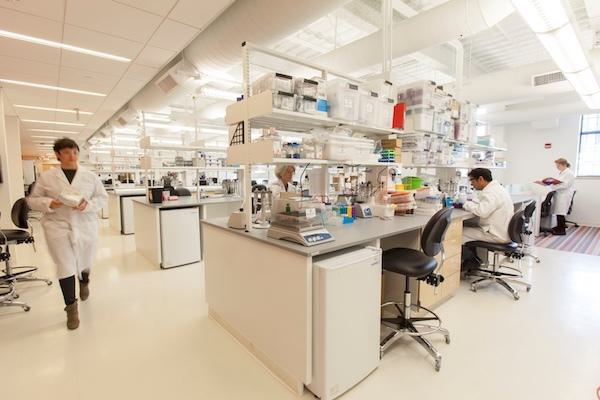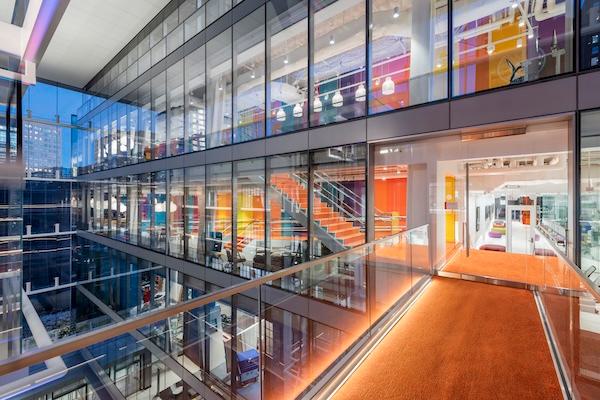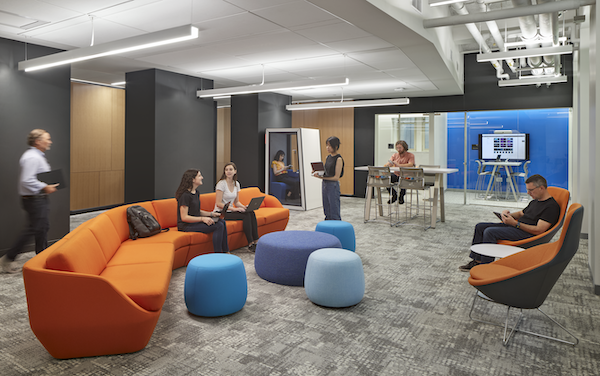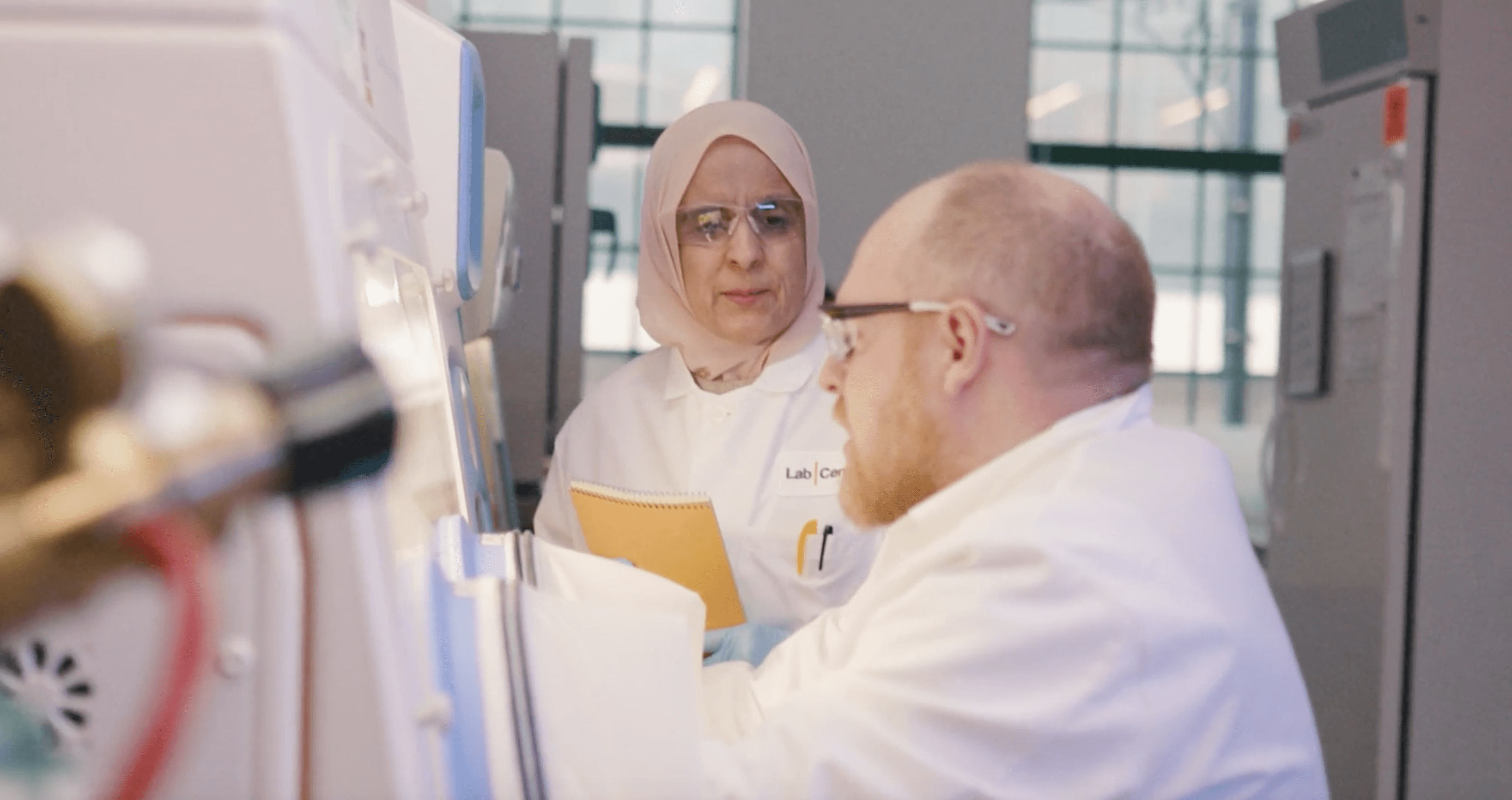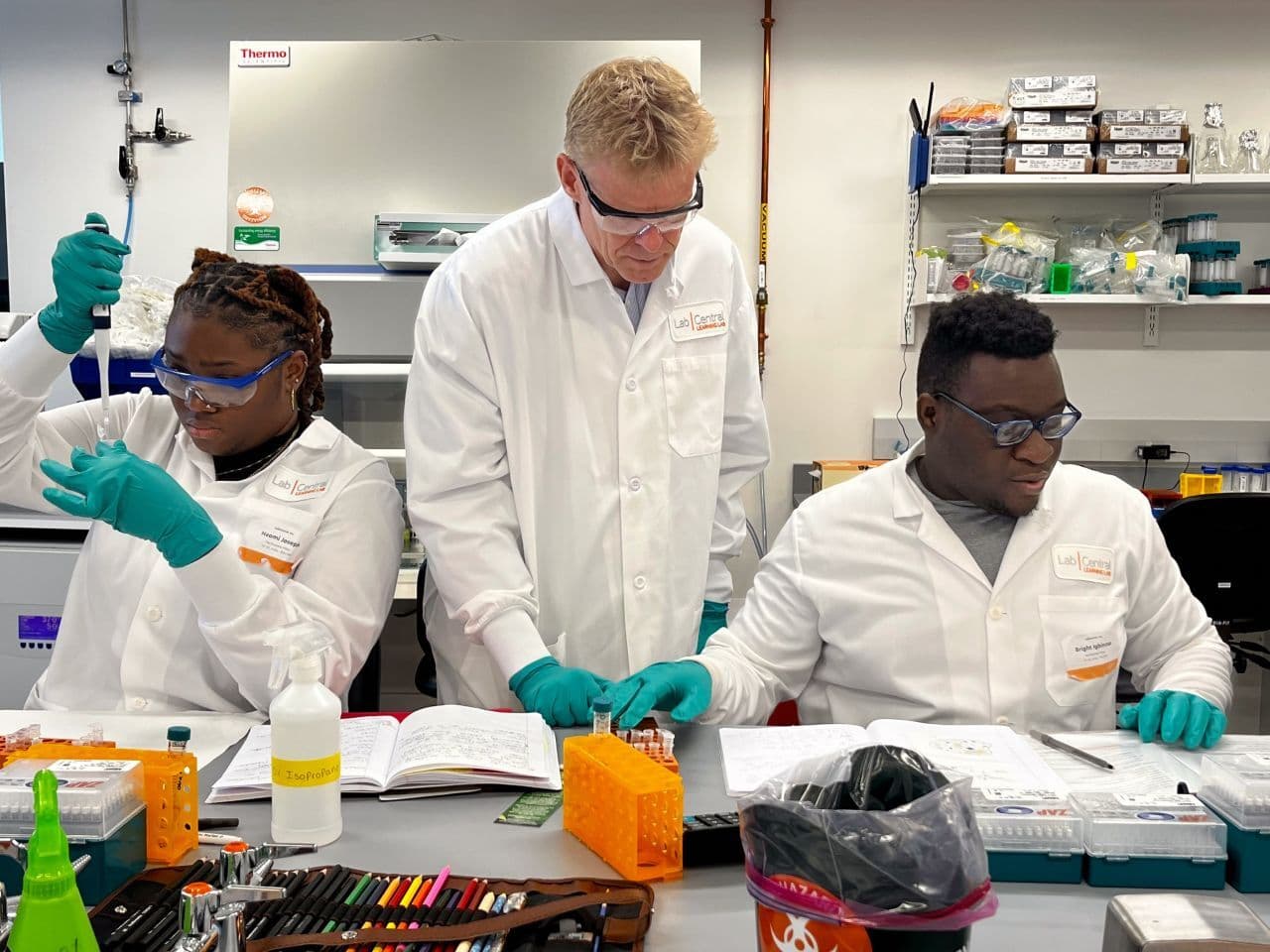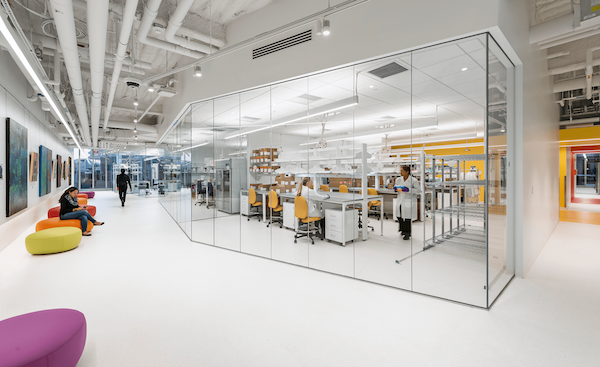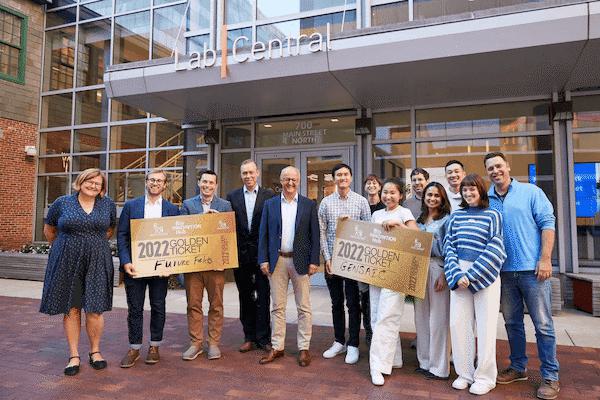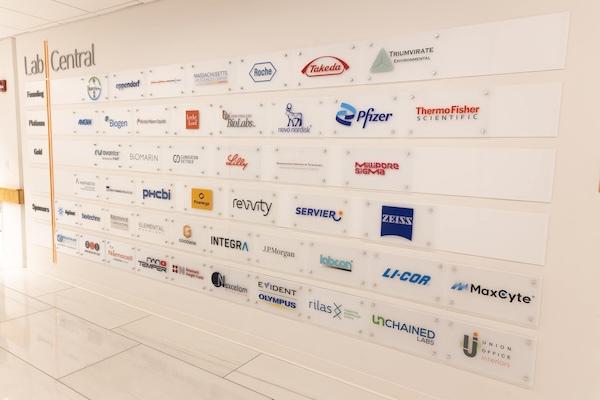As part of our blog series profiling LabCentral resident and alumni companies, we’re taking a look at Seismic Therapeutic, a biotech company that integrates machine learning across the biologics discovery process to accelerate immunology drug development.
Seismic launched with a bang in February 2022 with $101M in Series A financing, which will help to advance its first two lead drug programs toward clinical trials and support the buildout of its IMPACT™ Platform. We talked with Founder, President and CEO, Jo Viney, PhD, for a view into the company and its innovative technology.
Tell us about Seismic. How did it get started, and what’s your ‘big idea’?
We got started by bringing together our five stellar academic founders: Tim Springer, PhD, of Harvard Medical School and Boston Children’s Hospital; Debra Marks, PhD, of Harvard Medical School; Jeffrey Ravetech, MD, PhD, of Rockefeller University; Eric Sundberg, PhD, Emory University School of Medicine; and Andrew Kruse, PhD, of Harvard Medical School.
Tim assembled this specific team with an aim to do immunology drug discovery differently. Jeff, Eric and Andy are specialists on the immunology side, and Debra is an expert in machine learning. The goal is to use technology – specifically machine learning – to accelerate and enhance the process of making immunology drugs. What makes us special is the melding of the scientific and machine learning worlds to accelerate and enhance immunology drug discovery. That’s why we call ourselves “the machine learning immunology company.”
Can you talk more about what makes your approach unique?
I came to Seismic with expertise in drug discovery, and as mentioned, my team’s mission was to figure out how to intertwine machine learning with foundational biology and deploy them together to enhance immunologic drug discovery. To do this, we built our IMPACT™ Platform, which uses a development approach called “parallelization.”
To create immunologic drugs, you have to start with an understanding of the immune system and then determine how best to intervene and create the drug. Instead of creating the drug in the traditional way, making step-by-step changes one at a time in series, parallelization allows us to make multiple changes at the same time via computer simulation to understand the impact of potential drugs more quickly. We can then select the more favorable drugs for testing from the different model simulations. We evaluate the biology, efficacy, and manufacturability of each, and then we feed this information back into the machine learning algorithms for further analysis and adjustments, refining the model for creating the new drug.
By optimizing key therapeutic features in parallel, our IMPACT™ platform offers unprecedented scale versus trying to create each drug manually, one change at a time – an approach that is lengthy and expensive, and you’re not always sure how to integrate the data back into the original model.
I really want to highlight that our IMPACT™ platform approach is focused on ensuring we have good manufacturability for our newly created drugs. We only want to make a protein that has the right biophysical attributes in terms of being stable, will last the desired amount of time in the bloodstream or tissue, and is injectable and sustainable in humans. Again, we’re optimizing for manufacturing – something that used be done completely manually, one step at a time, but can now be done in parallel.
Seismic just moved to LabCentral 238, its newest facility. Can you talk about that and your personal evolution at LabCentral?
At different companies during my career, I’ve been lucky enough to operate out of each of LabCentral’s facilities. Moving Seismic into LabCentral 238 allowed us to get up-and-running with manufacturing testing right out of the gate, which was key since we’re focused on biologics manufacturing.
LabCentral 238 is a perfect complement to LabCentral’s other facilities. At a previous company, we started out at LabCentral 700 with one lab bench. That was our “I’ve got an idea and one or two people” phase. Then we grew into LabCentral 610 as a “young adult” – our idea was proven out, we were growing and had 8-10 people.
For companies like Seismic, space for a larger team as well as testing and scaling biomanufacturing capabilities is a real business challenge. If LabCentral 238 weren’t open, it could take 18 months or more to find a suitable space, not to mention the investment to lease it. And in many cases, a lot of the available lab space is too big. With a company that’s 10-30 people, you just don’t need 20,000 – 60,000 sq. feet.
How has LabCentral helped Seismic to operate and grow?
Without question, it’s that ability to get up-and-running without having to invest in space and infrastructure. The time from idea to experiment is dramatically reduced. You can literally show up and just get going in the labs. All of the key lab equipment is there at your bench, and there is a lot of shared equipment as well.
Again, if you are building your own labs, you have to choose which pieces of equipment to buy and that then limits the experiments you can do. With LabCentral, all of the equipment a scientist could need is there, so you can run any experiments you want. The lack of lag time and the diversity of experiments is really critical for entrepreneurial companies.
The reduced time from idea to generating detailed and diverse data sets is also key. When you’re doing assay development, you’re just trying to figure it out, there are a lot of unknowns. You can experiment over and over again, and there is a lot of trial and error. There’s such immense impact in having all of LabCentral’s shared resources at your disposal during this trial-and-error phase, it’s almost impossible to quantify the value.
In addition, it’s much easier to get new employees ramped up with zero downtime. Often when you have your own space, you have to wait for third-party environmental, health and safety training, but LabCentral has organized training sessions and safety experts, so it’s a very safe, fast and structured way to bring people on, including employees who are newer to the workforce.
What’s next for Seismic over the coming year?
This year, our eye is on recruiting the right talent. I can’t overstate what the LabCentral brand does for our hiring. We get immediate credibility and respect. Being here says we’ve already been vetted by an expert team, and we have the skills and resources to build a drug pipeline of medicines to make a real impact for patients.
The community is also really attractive. There’s such a large LabCentral ecosystem of biotech and pharma partners and collaborators. Through social events and networking, we’re able to meet a lot of great potential employee candidates, we get a lot of great tips from our peers, and we get a lot of great advice from LabCentral partners. LabCentral drives so much energy and buzz, which is great to be part of. And… it is a really fun place to be!
